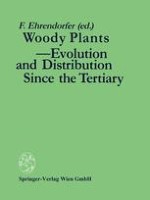1989 | Buch
Woody plants — evolution and distribution since the Tertiary
Proceedings of a symposium organized by Deutsche Akademie der Naturforscher Leopoldina in Halle/Saale, German Democratic Republic, October 9–11, 1986
herausgegeben von: Prof. Dr. Friedrich Ehrendorfer
Verlag: Springer Vienna
Enthalten in: Professional Book Archive
